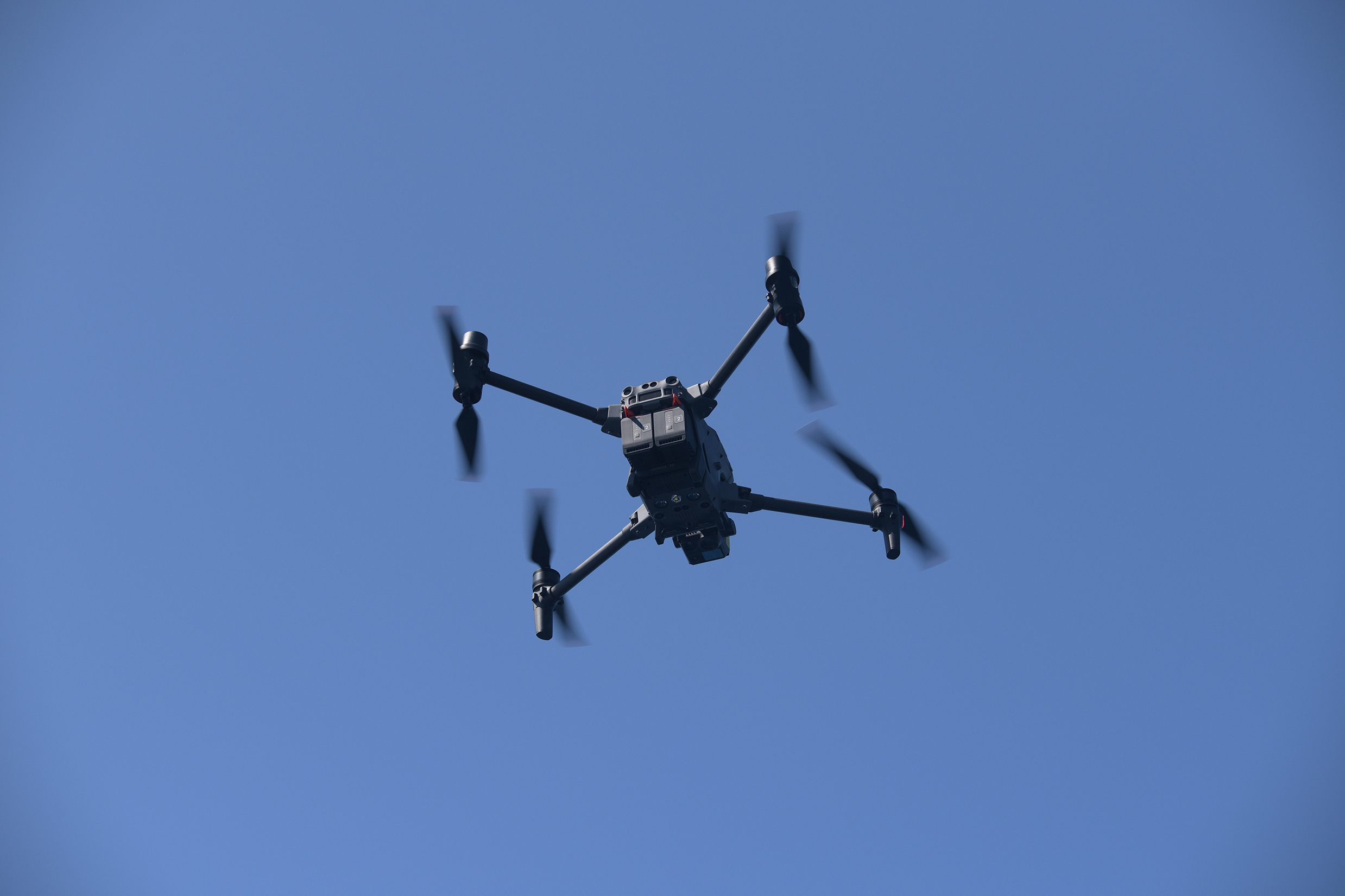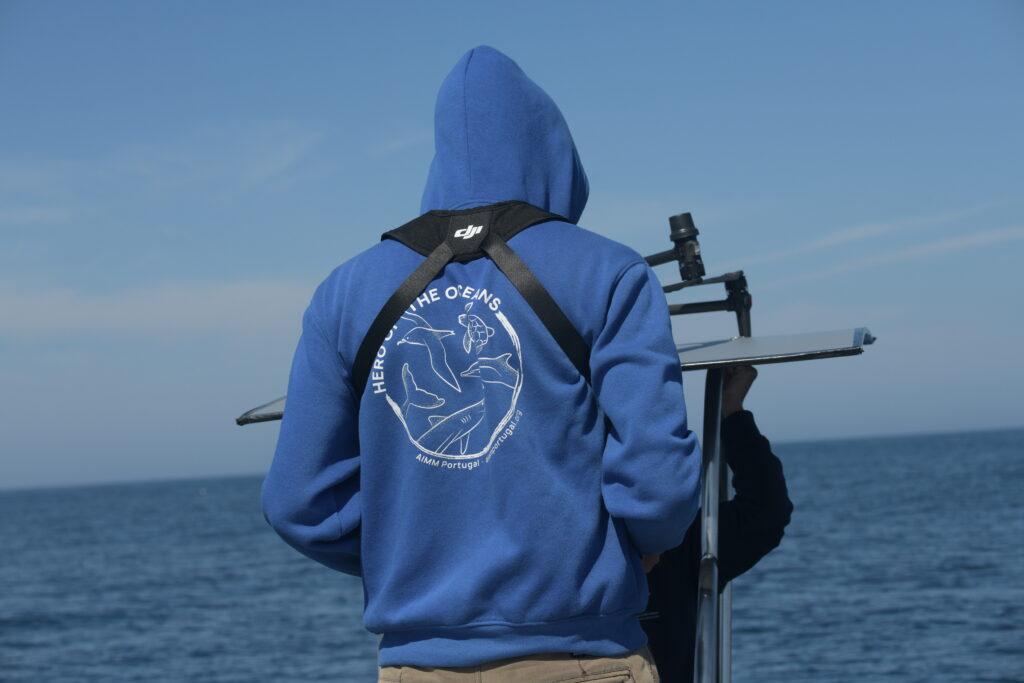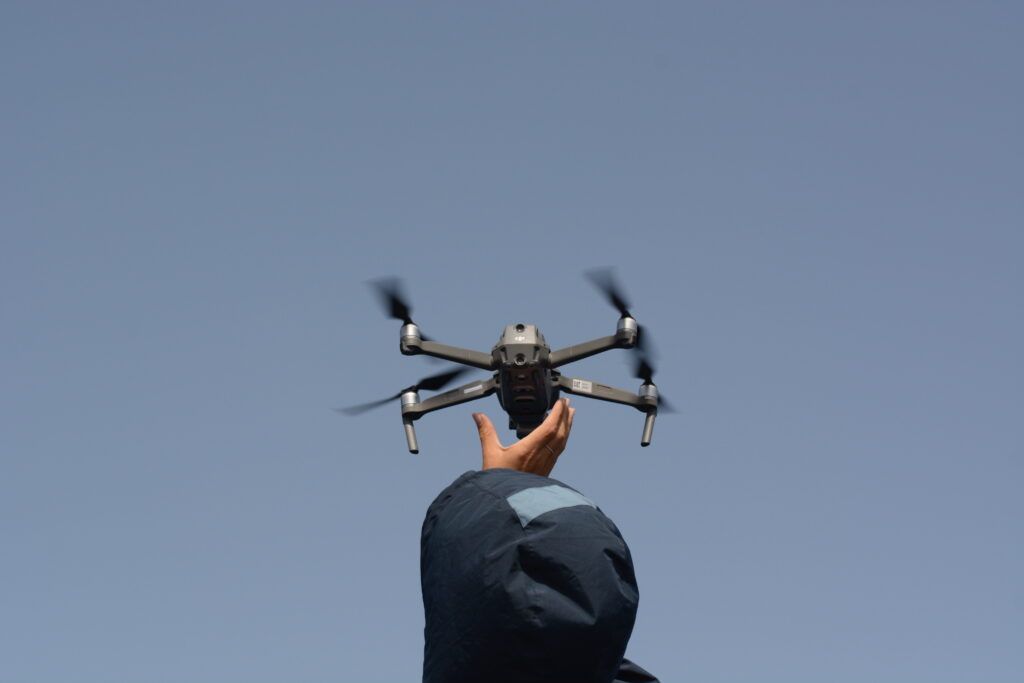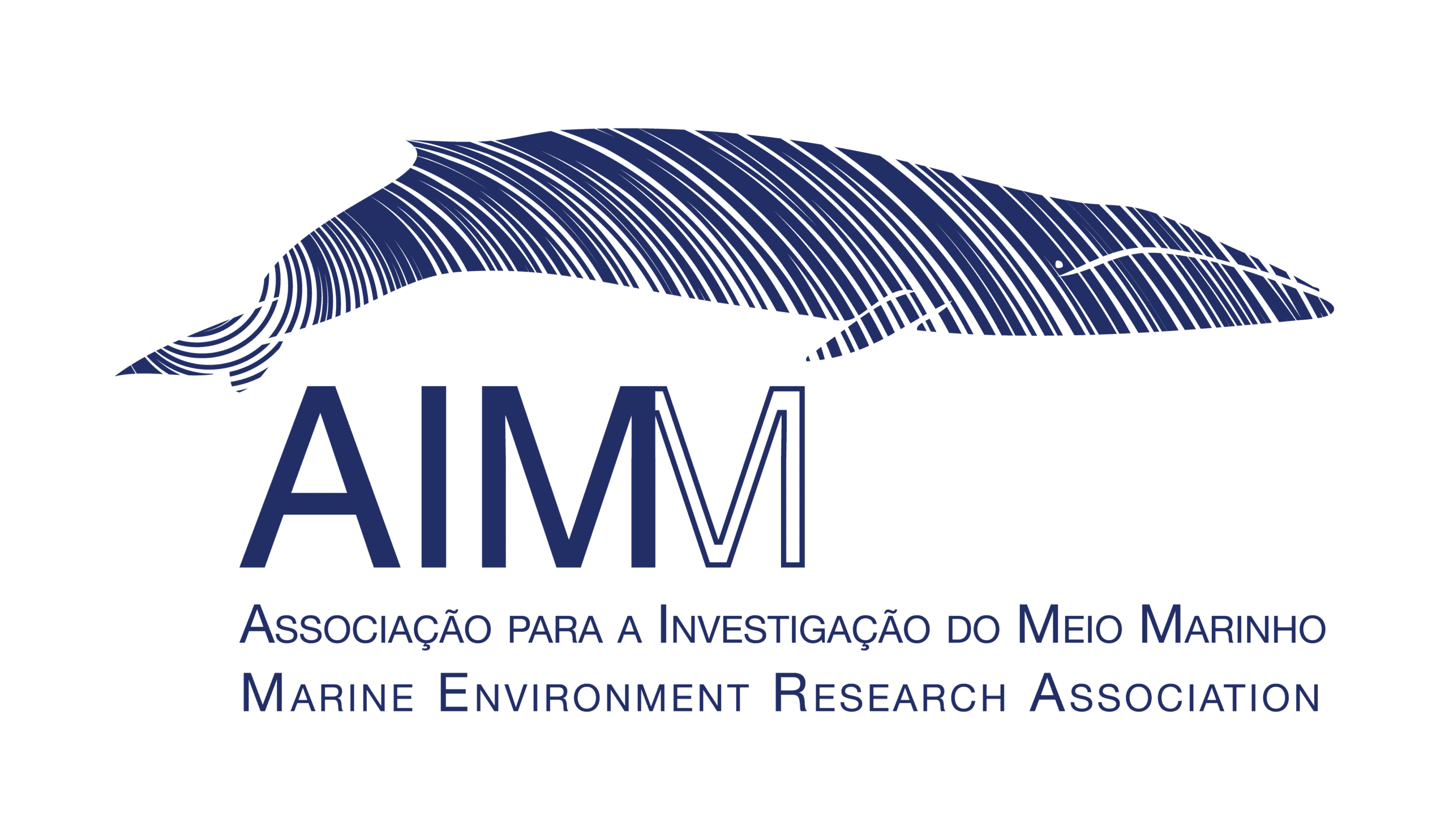
Drones, also known as Unmanned Aerial Vehicles (UAVs), are changing the game in cetacean research.
Traditionally, cetacean studies are conducted through boat surveys and sometimes land surveys, which has its limitations in terms of coverage and precision.
The drone technology has transformed the way researchers observe and study cetaceans, they now play an important role in marine scientific research due to their agility and ability to access hard-to-reach areas.
New case studies are now possible, providing detailed aerial images that help to better understand animal behavior and contribute to marine animal conservation.

We use the drone to collect data on marine mammals. See below what we have already done and what other potentials the use of UAVs for cetacean research has:
1. Evaluating the response of small cetaceans to the presence of drones (check here for more explanation).
2. Cetacean ecology and behavioral observations/ studies
Drones allow researchers to observe cetaceans from an aerial point of view, which is non-invasive at all times, without causing disturbance to the animals, given the drones maintain a safe distance. This helps in studying natural behaviors such as social interactions, and migration patterns. It also helps to better estimate population sizes.
For example, thanks to our experience in using drones in marine research, we were able to start a new project to assess impacts of fishing activities on dolphins in the Eastern Tropical Pacific. For this expedition we got a new drone, a thermal one! Thermal drones are powerful tools for detecting heat waves from above. It helps to detect animals presence and abundance even in conditions of poor visibility. Also it can detect the exact temperature of the water.
3. Raise public awareness with drone images and videos
We also use drone images we took during our boat surveys to feed our social networks. This seriously helps to raise public awareness and engagement thanks to the captivating aerial footage.
4. Drones can collect blow samples
We were lucky enough to get trained by some world top experts in bow sample collection using drones – our colleagues from Ocean Alliance. This way of collecting data is very recent and promising and is one of the major recent advances in the use of drones in cetacean research.
Collecting blow samples with a drone is a serious advantage, this technique is less dangerous for humans and less intrusive for animals. It replaces the collection of blows with a pole (which can be difficult and involves approaching the animal closely) or the need to take biopsies. This allows us to collect and analyze marine mammal viruses, DNA and hormones.
In 2021 AIMM joined Ocean Alliance during their SnotBot expedition to the island of Faial in the Azores to study a sperm whale population by collecting blow samples.
These next methodologies are not being used by AIMM but are currently used in the marine research field and are very interesting to mention in the cetacean research advancement:
How does it work? The drone pilot guides the drone to approach the selected cetacean. Once the pilot gets into the right position, the tracking device is deployed by being released, falling onto the cetacean and sticking onto it with a suction cup. The tag is temporarily on the animal’s body for about 24 hours. These devices can collect data on the cetaceans’ depth, speed, orientation, acceleration or deceleration, water temperature and acoustics. This provides valuable insights into their ecology.
Tagging cetaceans with drones represents a big advancement in marine research, providing a less invasive and more efficient method, considerably increasing the reach of researchers.
6. The power of photogrammetry by drones
Photogrammetry is a technique used in the field of cetacean research by drones equipped with a high-resolution camera. It is used to collect data on marine mammals by capturing images and/or videos of these animals from above the water surface from various angles.
This allows researchers to measure morphological features, such as body length, fin dimensions, and body volume. It provides valuable data to gain insights into the health and condition of the animals. It also allows researchers to track their development over time. Overlapping images even allow a detailed reconstruction 3D model of the cetaceans.

However, drone use is governed by strict (local) regulations. The pilot needs the necessary permits and responsible practices must be adopted to avoid any negative impact on marine mammals.
For instance, a drone can go up to 500 meters, but legally the highest point it can reach is 120 meters. At AIMM we go up to more than 20 meters to have an overview of the animal group and to not disturb them.
Drones have serious advantages, but also disadvantages, which can reduce the research scope in different ways.
|
PROS |
CONS |
|
Low impact in the animals |
New technology |
|
HD images from an aerial perspective |
Costly acquisition |
|
Detailed observation of behavior |
Requires experienced and qualified pilot |
|
Cheap to use in the field |
Needs large data storage capacity |
|
AND MORE |
AND MORE |
|
Access to hard-to-reach areas |
Limited autonomy (about 30 minutes) |
|
Quick data collection |
Dependence on weather conditions |
Drones can be excellent tools to study cetaceans in the wild and considerably helped AIMM to develop our research. As technology continues to evolve, there will be even more exciting developments in drone research and conservation of cetaceans, and AIMM hopes to be in the front row to be a part of it all!
Watch these two videos to get an idea of what kind of drone footage we can capture during our boat surveys! here and here.
